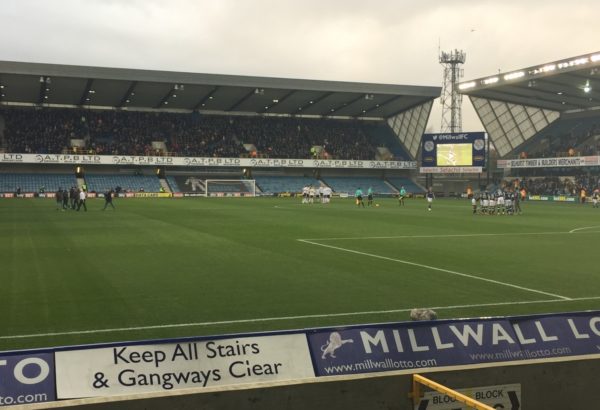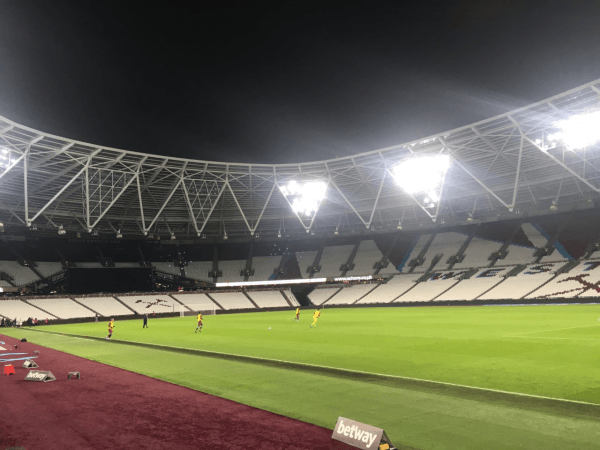On 9th December 1899, two football clubs in the heart of east London met in the 5th Qualifying Round of the FA Cup.
In the 43,928 days since, West Ham United and Millwall have met 99 times in 11 different competitions and created one of the most intense rivalries in all of football.
Fast-forward to 2012, the last meeting between the two, and a 6th minute straight red card for Kevin Nolan shows there’s no love lost.
There are few rivalries that transcend hostility and get to borderline brutality, this is certainly one of them.
The rivalry circumvents action on the pitch and has become a postcode war as such, asserting superiority over your biggest rivals.
The Birth Of England’s Fiercest Derby
It all started at the London docks at the turn of the 20th century. West Ham, who were known as Thames Ironworks back then, were situated just three miles from Millwall. As soon as Ironworks were formed, the rivalry began. “Millwall Athletic and Thames Ironworks were made up of dock workers from opposite sides of the river, competing for the same business. Small wonder it got so spicy” a profile from The Telegraph described.
In June 1900, Thames Ironworks disbanded due to disputes over those running the club and one month later, West Ham United were formed.
In the early stages of the rivalry, his was not just a local derby. The two clubs were at the peak of their powers, battling it out at the top of the Southern League, but it was Millwall that enjoyed the early success.
In fact, in a period between 1901 and 1903, Millwall avoided defeat to the Hammers on 12 consecutive occasions, a run that included nine wins.

The first sign of real violence came in 1906, when Millwall’s Alf Dean was hurled against a metal advertising board by West Ham’s Len Jarvis, with other being stretchered off too.
“From the very first kick it was seen that there was likely to be some trouble. All attempts at football were ignored.” a report from The East Ham Echo, via The Independent explained.
Shortly after, Millwall dropped “Athletic” from their name and moved four miles south to The Den.
The clubs were farther apart than ever but by no means did that put out the fire of the derby, if anything, it just burned brighter.
The emergence of both World Wars between 1915 and 1945 threatened to put a dampener on the rivalry, but this was certainly not the case.
In fact, a goalless draw at Upton Park in 1938 remains the record attendance for this fixture at 42,200.
A rare moment of respect was seen between the clubs in 1943 when, after a German bomb caused damage to The Den, West Ham offered for Millwall to play their game at Upton Park, an offer that was accepted.
Post-War Absence
The derby did suffer from a brief break post-war after Millwall’s poor form saw them drop as low as the 4th Division.
Despite this, both fan-bases still saw each other as their biggest rivals, with West Ham winning three FA Cups and a European Cup Winners Cup in the time until they met again in 1978.

As you can imagine, the country’s biggest rivalry reuniting at the peak of football hooliganism was a cause for concern.
There were numerous incidents during the 1970s, which included brawls both inside and outside of The Den during a testimonial for Millwall defender Harry Cripps.
Four years later, Millwall fan Ian Pratt tragically lost his life after falling out of a train after a fight with West Ham fans.
This spiralled the rivalry into a violent period of tug and war, in which both fans competed to get one up on each other in the most malicious way possible.
The Mothers Day Massacre
Tempers continued to flair during the decade and eventually culminated in a game in 2004 which eventually became known as the Mothers’ Day Massacre. One man was stabbed and at least two were arrested in what the Telegraph described as “large-scale” fan trouble. Missiles and bricks were thrown and “the violence between the two sets of fans were serious.”
For over a century, this east London rivalry has transcended football and often spilled off the pitch into pubs, bars, restaurants and car parks.
The rivalry was so much more than what happens on the field of play and evolved into what became a postcode war.
The fan violence has certainly cooled in recent years, but the incredible levels of passion and determination to get one over on their rivals are still very much alive on the pitch.



